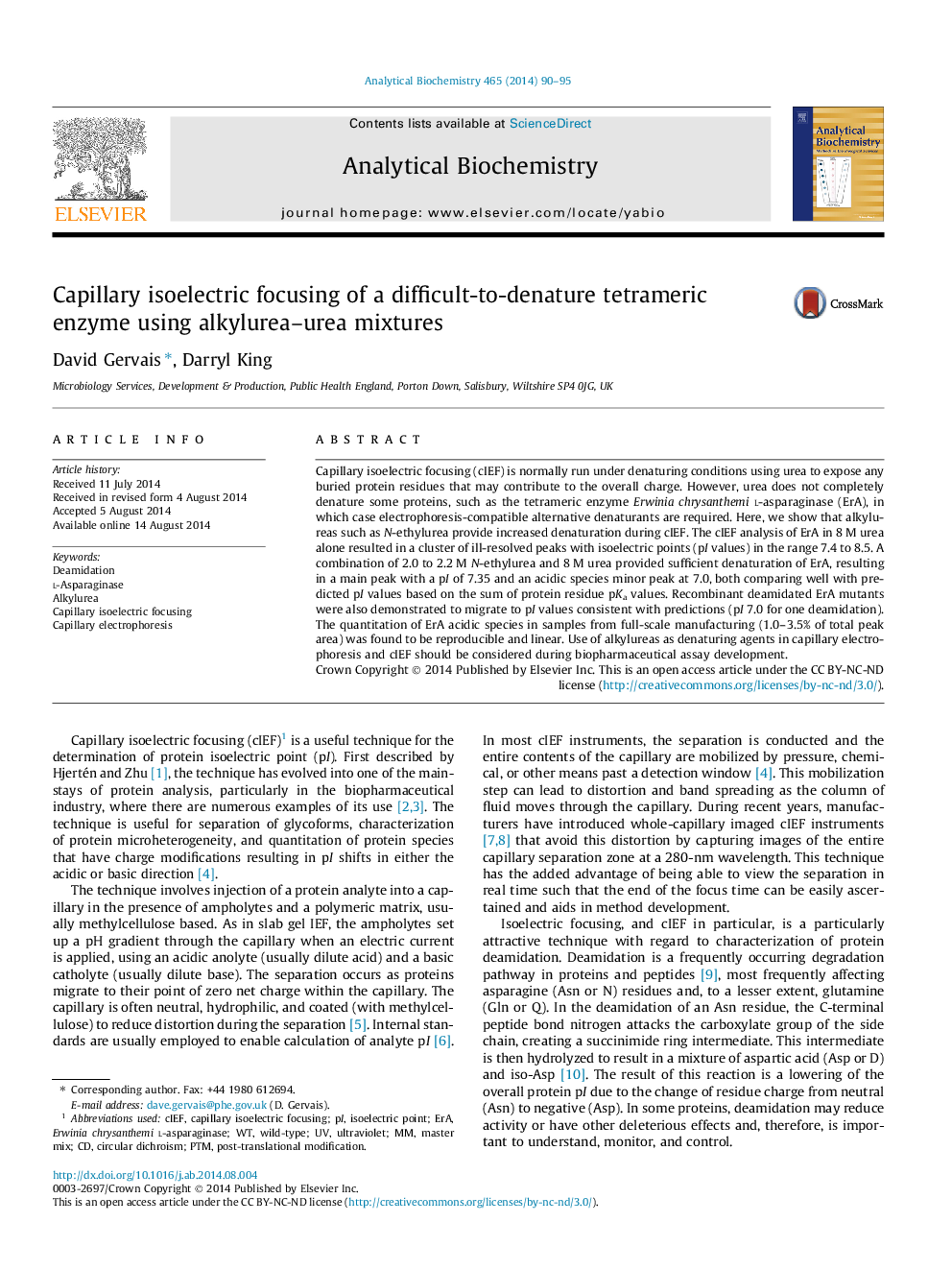| Article ID | Journal | Published Year | Pages | File Type |
|---|---|---|---|---|
| 7559029 | Analytical Biochemistry | 2014 | 6 Pages |
Abstract
Capillary isoelectric focusing (cIEF) is normally run under denaturing conditions using urea to expose any buried protein residues that may contribute to the overall charge. However, urea does not completely denature some proteins, such as the tetrameric enzyme Erwinia chrysanthemil-asparaginase (ErA), in which case electrophoresis-compatible alternative denaturants are required. Here, we show that alkylureas such as N-ethylurea provide increased denaturation during cIEF. The cIEF analysis of ErA in 8Â M urea alone resulted in a cluster of ill-resolved peaks with isoelectric points (pI values) in the range 7.4 to 8.5. A combination of 2.0 to 2.2Â M N-ethylurea and 8Â M urea provided sufficient denaturation of ErA, resulting in a main peak with a pI of 7.35 and an acidic species minor peak at 7.0, both comparing well with predicted pI values based on the sum of protein residue pKa values. Recombinant deamidated ErA mutants were also demonstrated to migrate to pI values consistent with predictions (pI 7.0 for one deamidation). The quantitation of ErA acidic species in samples from full-scale manufacturing (1.0-3.5% of total peak area) was found to be reproducible and linear. Use of alkylureas as denaturing agents in capillary electrophoresis and cIEF should be considered during biopharmaceutical assay development.
Related Topics
Physical Sciences and Engineering
Chemistry
Analytical Chemistry
Authors
David Gervais, Darryl King,
